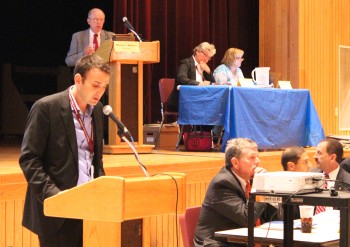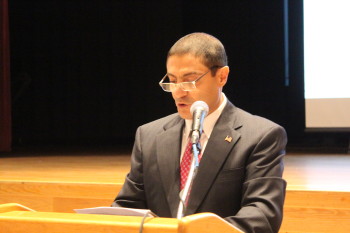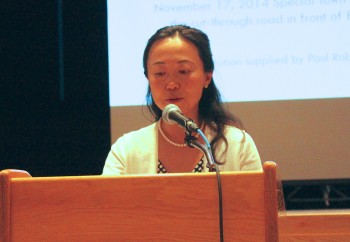Photo: Minuteman Regional HS
Belmont officials s selected a tentative date for Town Meeting to vote to approve or reject a new regional agreement for the Minuteman Career and Technical High School.
The Board of Selectmen will discuss and vote for a Special Town Meeting on Monday, Feb. 8 at 7 p.m. in the Chenery Middle School’s auditorium at its Monday, Jan. 11 meeting.
That same night members will also decide to create a building committee to oversee a major renovation of Belmont High School. But this article comes with a big “if.”
Along with accepting the date, Selectmen will open and close the Special Town Meeting warrant – at which time items can be put on Town Meetings agenda – during the discussion.
Town Meeting members will be asked to approve a series of fundamental changes to the existing agreement with the 15 other towns and cities in the Minuteman.
Those alterations include the ability of members communities to withdrawal from the agreement (a number of towns with a handful of students have indicated they wished to depart the group) and requires out-of-district communities such as Watertown, Waltham and Medford which send nearly 40 percent of the new students to the school, to help pay a proportional share of capital costs of a new $144 million building.
In a last minute addition to the warrant, members will be asked to approve the creation of a Belmont High School Building Committee, which will direct the estimated $100 million renovations of the existing building and the construction of a science wing.
The article was suggested by Pat Brusch of the Capital Budget Committee and former vice-chair of the Wellington Building Committees, who said the creation of a committee will give the group a several month head start on working with the state on the multi-year project and begin building public consensus for the project.
The town will likely vote in 2017 on a $65-$70 million debt exclusion to fund the project.
The article’s big “if” is that its existence depends on the approval of the School District’s Statement of Interest by the Massachusetts School Building Authority which will fund close to a third of the renovation and construction costs.
The MSBA will select approximately half of the 25 projects currently on its “short” list at its Jan. 28 meeting.



